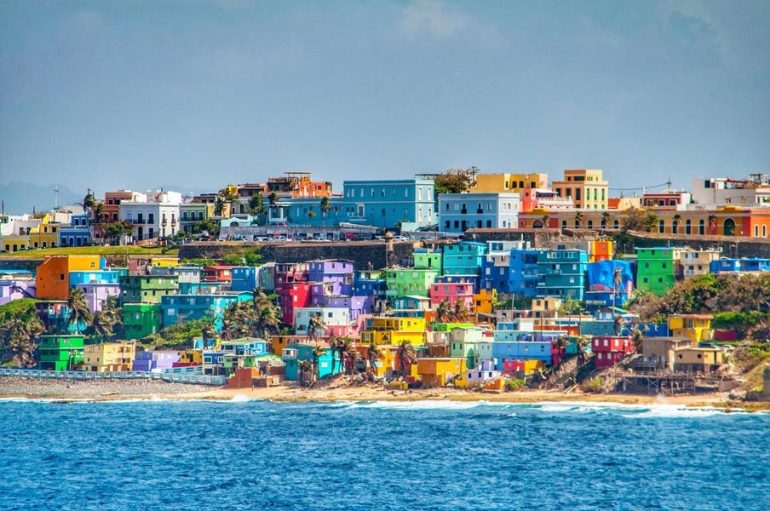When we plan our travels, it’s not often that we consider how polluted a place is, but a report from IQAir’s 2023 World Air Quality report reveals that the weather quality of some well-known vacation spots may make us reconsider. There is n’t much research done on how visiting places that are heavily polluted affect people’s health. There were calling for more studies on disadvantaged groups, despite the fact that a 2021 study found that international travelers ‘ health effects were thought to be removable upon returning home. Another study conducted in 2019 discovered that healthy people ‘ exposure to air pollution had a statistically significant impact on respiratory health.
The chart shows that while most of the United States and Europe have better air quality than different regions of the world, many of the cities across these property people have at least twice the WHO air quality standards. However, this is true for 124 of the 134 countries and regions with applicable information.
The PM2.5 attention was measured—meaning fine particulate air particles measuring up to 2.5 microns in diameter—as the major air excellent sign for this research. These could be dirt mite allergens or pathogen that emanate from salts, black coal, nitrates, and nitrogen. These may come from person- made resources like coal and wood burning, agrarian pursuits, and structure, as well as from natural sources such as dust storms, wildfires, and sandstorms. As a comparison, pollen and dust would be much bigger than these particles ( 10 microns ).
One of many environmental indicators used by environmental organizations to measure pollution is the measurement of micrograms per cubic meter ( g/m3 ). The WHO recommends that PM2.5 concentrations not exceed 5 micrograms per cubic meter.
Iceland, which is ranked only in terms of the air quality in Mauritius and French Polynesia, has the best weather in Europe, according to The Telegraph. Estonia, Finland and Sweden likewise had higher weather quality than other places. The U. K. came in eighth place.
In Europe, Bosnia and Herzegovina has the worst weather value, on a line with Uganda and Senegal. Crucially too, many European holiday hotspots came quite high on the list of countries with poor air quality, places like Turkey, Albania ( a favorite 2024 destination ) and Greece.
Only four areas in the United Kingdom adhere to the WHO recommended 5 mg or less per square meter: Chirk in Wales, Redcar in South Devon, and Stape in North Yorkshire. Scotland fares better, with Edinburgh ( 4.9 ), Motherwell ( 4.1 ) and Inverness ( 4.5 ) among those making the cut.
Further inland, New Zealand and Australia fare well ( sixth and seventh place for cleanest air both ) but Asia homes 97 of the 100 most polluted cities on Earth with 83 located in India. As an idea, the most polluted city ( for air pollution ) is Begusarai, on the Ganges river in north India with an average annual PM2.5 reading of 118.9 µg/m3.
There were seven global cities with the best air quality—that within the WHO zone —with San Juan in Puerto Rico ( 2.7 ) coming in first place, followed by Wellington in New Zealand, Canberra in Australia, and Reykjavik in Iceland ( 3.4). Tallinn in Estonia, Helsinki in Finland, and Hamilton in Bermuda complete the checklist. Simply 6.7 % of European places, though, meet the WHO recommendations.
After two years of fighting, Ukraine reported a decline in air quality as a result of the use of strong fuel sources to heat homes.
14 % of U.S. places meet WHO standards, but the air quality was drastically impacted by the fire in Canada that burned an area roughly the size of Germany from May to October 2023. As a result, the document states that in some places, “including Minneapolis and Detroit, annual statistics rose by 30 to 50 % compared to the previous time”. The most poisoned big city in the U. S. was Columbus, Ohio, for the next time in a row.
It’s good news for travelers to Wyoming, Colorado, Arizona and New Mexico as these states experienced the lowest PM2.5 levels in the continental United States, with Tucson, Arizona ( 3.5 µg/m3 ) and Albuquerque, New Mexico ( 4 µg/m3 ) both reporting annual averages that meet the WHO guideline levels.
There are many things tourists can do to reduce their own private air pollution footprints, somewhat bike, walk, or use public transportation where feasible, as well as reducing their energy use.
Many nations were unable to be included in the report, despite the fact that they are frequently places with lower levels of tourism, like Chad, Sudan, and Iran, where there is no publicly accessible monitoring data.
Data is gathered in 134 regions and countries using 30, 000 ground- level air monitoring stations, as well as low- cost air quality sensors operated by institutions, governmental bodies, universities, non- profits, private companies, and citizen scientists.












































